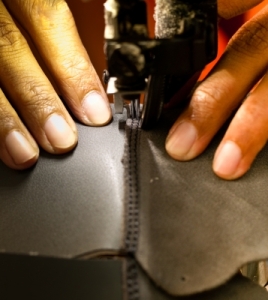Quilting can be a very labor intensive project, but the amount of work involved can be minimized if a person does at least some of the quilting work using a sewing machine. There are a number of methods that can be used, but for a beginner it may be easiest to start with straight-line quilting.
Straight-line quilting involves sewing in straight lines to sew all of the pieces and layers of the quilt together. This is just like other types of sewing, just start off taking a stitch or two forward, then a couple backward to keep it from unraveling before going forward again until finishing or needing to change the needle or thread. When finishing, be sure to sew a few stitches backward at the end to seal the stitching in place. The main difference is that it’s best to use a special foot on the sewing machine, called an even-feed foot, a quilting foot or a walking foot, to make sure all layers feed through at the same time.
Another important step for proper machine quilting is to choose the right sewing machine needles for the project. Sometimes a quilting needle that is size 90/14 meant for top stitching is recommended for this process, but this has such a big eye that it can leave big holes in the finished project from the needle. In most cases, beginners can use the more standard 80/12 needle. More experienced quilters can choose the needle based on the size of the thread and the material being used. For example, try to get a needle with an eye that is between two and three times bigger than the thread. The thicker the material, the larger the shaft of the needle should be. This is what the numbers mean, with a 60/8 shaft being relatively small and an 80/12 needle being more average.
Next, choose the thread. Beginners can use a 100 percent cotton thread that is 50 weight, but other options include nylon or polyester monofilament, which are good for those who want a clear thread that doesn’t show. Otherwise, opt for a top thread to match the top layer and a bottom thread to match the backing of the quilt.
